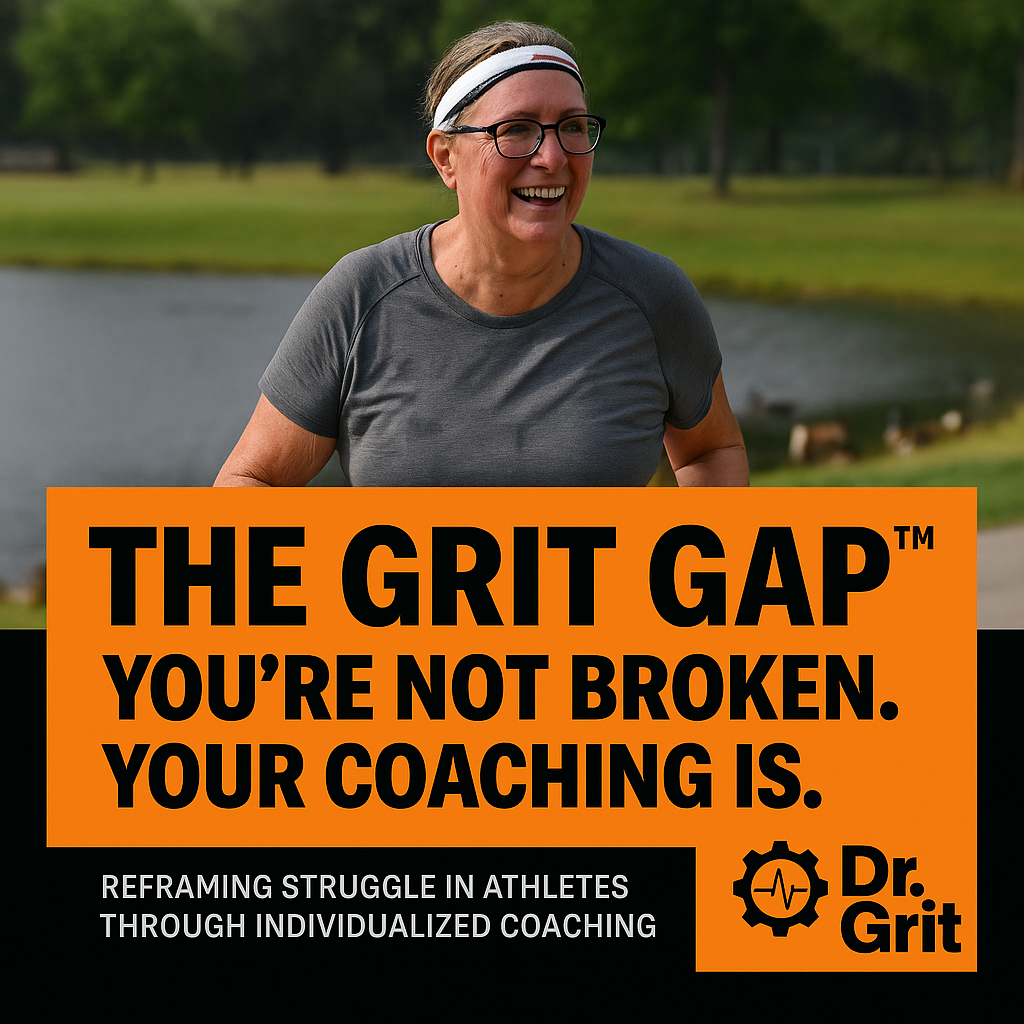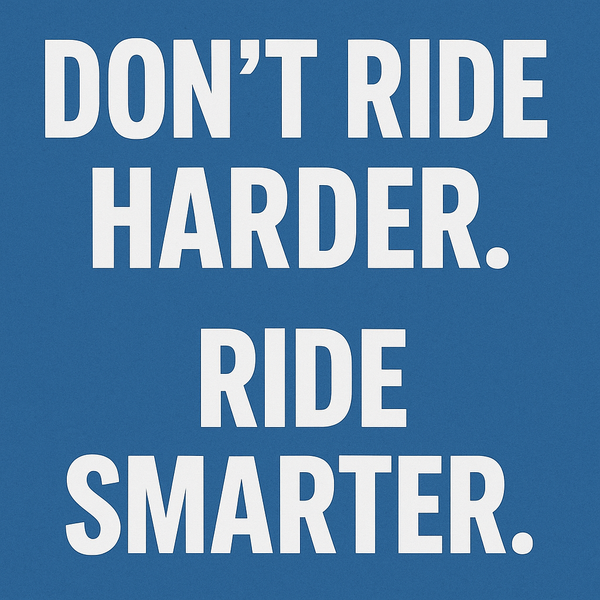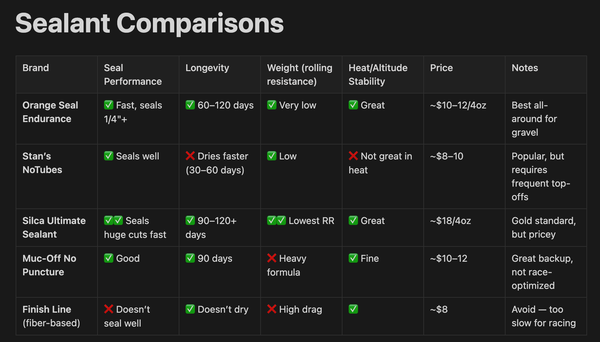The Grit Gap™: You’re Not Broken. Your Coaching Is.

It was another blistering July morning in southern Alabama, and Miss Louisa—retired after 40 years corralling middle schoolers and now trying to corral her own knees into a jog—had just discovered, to her horror, that her expensive “sweat-wicking” activewear only wicked in one direction: straight into her socks.
“Bless it,” she muttered to the pond ducks, who seemed equally unimpressed with her pace and her TED Talk on southern humidity.
Last week, her heart rate monitor started beeping so dramatically at her pace that a jogger asked if it was a medical alert bracelet.
“Y’all, I’m not broken. I’m just new at this,” she hollered, wringing out her headband like a war flag.
Louisa’s grit? Impeccable.
Her suspicion? Maybe running wasn’t built for women her age, her hormones, or her heat index.
And honestly? She’s not wrong.
🧠 The Psychological Toll of Generic Coaching
Late bloomers. Bariatric athletes. Menopausal women. Comeback kids.
All of them are routinely fed the same coaching Kool-Aid as 22-year-old men with protein sponsorships and no cortisol spikes.
So when they stall out, they blame themselves:
“I’m not cut out for this.”
“Why is this so hard for me?”
“What’s wrong with my body?”
Here’s what’s wrong: the plan, not the person.
This disconnect between generic coaching and real-life biology is what I call The Grit Gap™ — the mental, hormonal, and emotional fallout that happens when someone’s training plan forgets to account for their actual nervous system, stress profile, and life context.
🧬 Neurotype Training: AKA, Why You’re Not Like Chad
Modern research tells us your brain chemistry — dopamine sensitivity, stress response, hormonal rhythm — radically affects how you train, recover, and stay motivated.
Neurotype coaching builds around that.
It asks:
“What do you need to stay regulated, motivated, and recovered?”
Not:
“Can you survive this brutal plan without crying?”
Let’s break it down:
- Type 1B athletes? Thrive on chaos, novelty, and instant feedback.
- Type 3 folks (hi Louisa!)? Need structure, predictability, and zero sudden tempo surges on mile two.
Fail to match that? You’re not building fitness — you’re building frustration.
🧾 Thibaudeau (2020) and Tailored Coaching Method (2022) show how neurotransmitter profiles affect motivation, stress load, and even injury risk in improperly matched athletes.
⚠️ Invisible Stressors Are Still Load
Now let’s talk about everything that doesn’t show up in your training app:
- 🔥 Menopause
- 🧠 Anxiety
- 🍼 Caregiving
- 🍽️ Fueling struggles
- 😩 Sleepless nights from hormone hell or 3am cortisol spikes
These aren’t “excuses.”
They’re load multipliers — and when your coach doesn’t see them, you end up chronically red-zoned with no clue why you're not recovering.
🧾 Mountjoy et al. (2018) and Meijen et al. (2020) confirm that stress—psychological or hormonal—directly affects performance, fatigue, and athlete burnout.
👏 Louisa’s Not Lazy. She’s Under-Coached.
When she gets dropped in mile 2, it’s not about motivation.
It’s about mismatch.
She doesn’t need:
- A “grind harder” speech
- Another carb-tracking macro sheet
- Or your unsolicited Strava data
She needs:
- A plan that respects her life stage
- A coach who gets menopause and neurobiology
- And a community that doesn’t treat her like a pity project
💛 So How Do You Actually Help a Louisa?
Here’s how to show up — no cape required:
🗣️ 1. Speak Up, Not Down
Say:
“I’m glad you’re here. Want company?”
Not:
“You’re doing great!” while riding ahead.
🕯️ 2. Pace With Her, Not For Her
Let her set the pace.
She doesn’t need a babysitter — just someone who doesn’t treat being slow like a tragedy.
🧠 3. Normalize the Struggle
“I didn’t know how hard this would be when I started either.”
“Menopause is brutal. You’re not alone.”
Validation kills shame faster than any race medal.
🧾 4. Ask What Support Looks Like
“What would feel helpful right now?”
Then shut up. And do that.
Sometimes she wants space.
Sometimes she wants a wheel.
Sometimes she just wants to feel seen.
🙌 5. Share the Damn Resources
Send the PDF. Recommend the guide. Say, “Hey — this reminded me of you in the best way.”
That’s how you build a real endurance community.
Not one where everyone’s the same.
But one where everyone is seen, adjusted for, and still strong as hell.
🧰 Coming Soon: The Grit Gap™ Guide
✅ Neurotype quick start
✅ Invisible stressor audit
✅ Recovery load tools
✅ Menopause & return-to-sport roadmap
✅ Bonus: “You Don’t Suck — You’re Just in Perimenopause” chapter
🛒 Grab it on Gumroad
📬 Or subscribe at one-gear-short-of-normal.ghost.io
🎓 References (APA-ish):
- InnerDrive. (n.d.). 4 Ways to Combat Imposter Syndrome in Sport.
- Persistence Psych. (2024, June 29). Conquering Imposter Syndrome: A Performance Psychology Perspective.
- Tailored Coaching Method. (2022, December 8). Understanding Your Neurotype.
- Thibaudeau, C. (2020). Neurotyping and the Future of Individualizing Athletic Performance [Podcast].
- DAC Baseball. (n.d.). Know Your Athletes: Why We Neurotype.
- Meijen, C., et al. (2020). Psychological Load and Athlete Burnout. IJSEP, 18(3), 282–299.
- Mountjoy, M., et al. (2018). Relative Energy Deficiency in Sport (RED-S). BJSM, 52(11), 687–697.
🛡️ Legal Disclaimer
This content is for informational purposes only and is not intended to diagnose, treat, or provide medical advice. Always consult with your licensed healthcare provider before making changes to your training, nutrition, or medication. Amanda McMahon (Dr. Grit™) is not a licensed medical professional. Participation in any program, guide, or consultation is voluntary and at your own risk.
™ Trademark Attribution
The Grit Gap™, Dr. Grit™, and One Gear Short of Normal™ are trademarked concepts owned by Amanda McMahon. Unauthorized reproduction, distribution, or use of these terms or frameworks is prohibited without express written permission.



